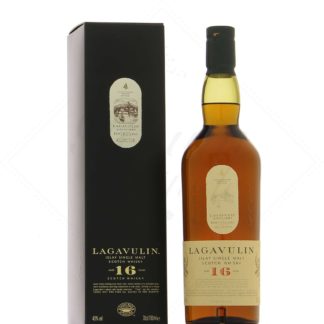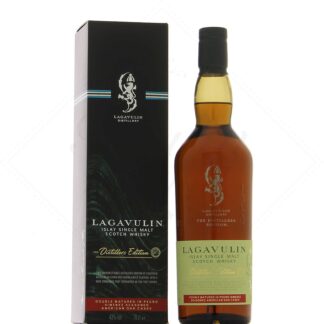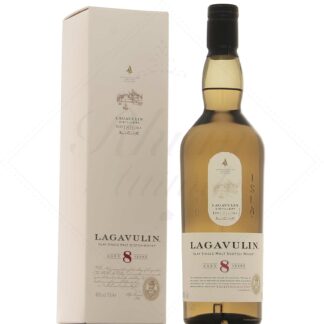Lagavulin

The Lagavulin story
Lagavulin ("Mill Valley" in Gaelic) is a distillery on the Scottish island of Islay. Its origins date back to 1742, on a site where several clandestine distilleries were already operating. Their moonshine was illegal, but popular nonetheless. Their activity was more or less tolerated by the authorities.
The distillery was finally officially registered in 1816. Lagavulin was the island's first legal distillery. It was run by John Johnston. In 1834, it merged with its neighbor Ardmore (not to be confused with today's Ardmore on Speyside).
Lagavulin truly prospered at the end of the 19th century, under the management of Peter Mackie. Its whisky was the main component of the White Horse blend, which enjoyed worldwide success.
In 1908, a second distillery was built to compete with its neighbors, Laphroaig in particular. Malt Mill produced an extremely peaty whisky that is now the stuff of legend. This second distillery closed in 1960, its two stills remaining with Lagavulin.
In 1927, the company was taken over by the Distillers Company Limited (now Diageo). Lagavulin abandoned its own kilns (malting floors) in 1974, and began to source from the Port Ellen malting plant.
Lagavulin whisky production
Fermentations are particularly long at Lagavulin, using naturally peaty water.
Since everything is done to obtain a highly aromatic whisky, distillation is also rather slow. Two onion-shaped wash stills and two spirit stills are used. The distiller's habit is to fill them to 95%, which is exceptional for the region, and allows for heavier distillates. The cups are also wider than usual, ensuring that all the full-bodied aromas are captured. The peat concentration of our whiskies averages 35ppm.
A few casks are aged at the distillery, in a cellar open to the sea air. But most of them mature in a remote cellar in the center of the country. Most of the casks used are old sherry casks. This is where the balance of this characterful whisky comes from, encased in a cask that gives it softer, fruitier notes.
90% of production is dedicated to the single malt range, and 10% to the White Horse blend. Read less



